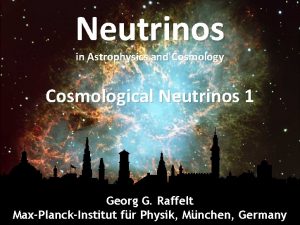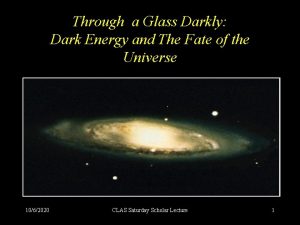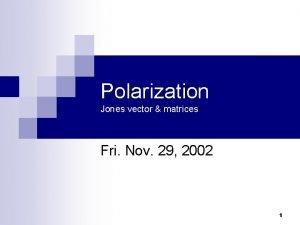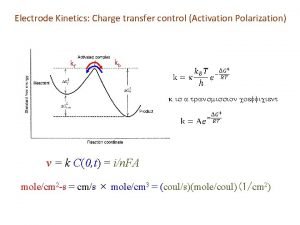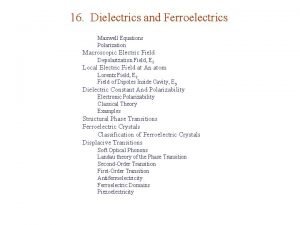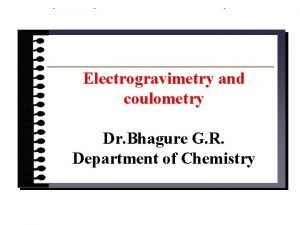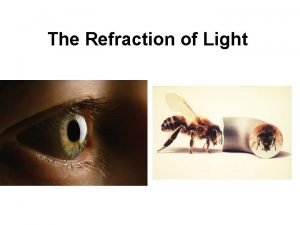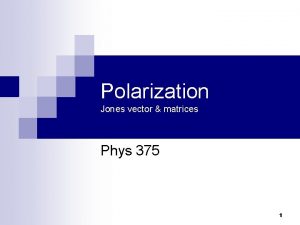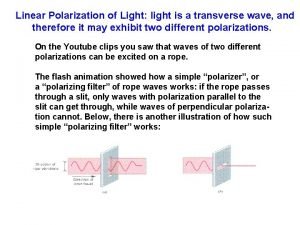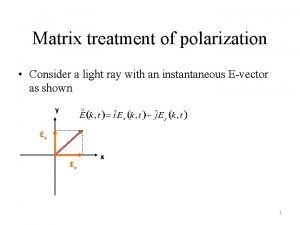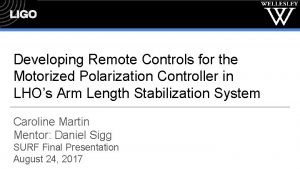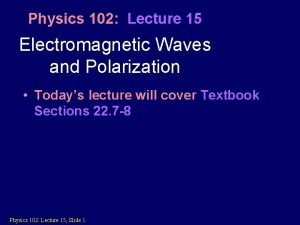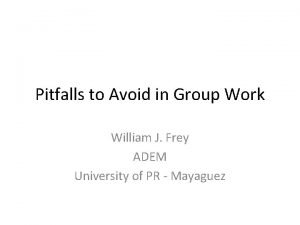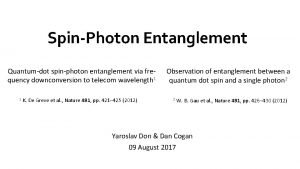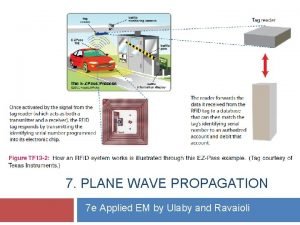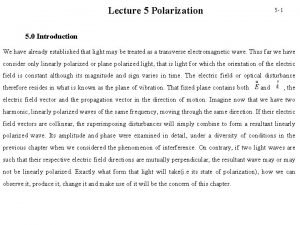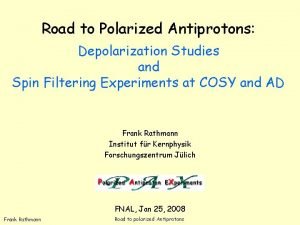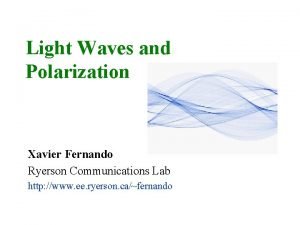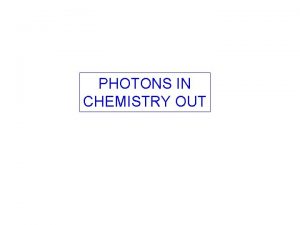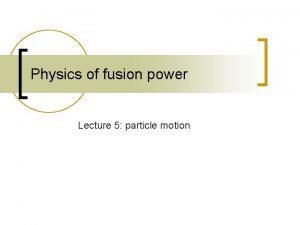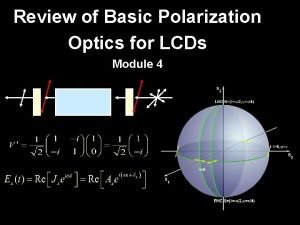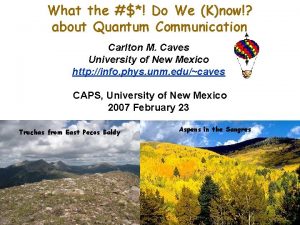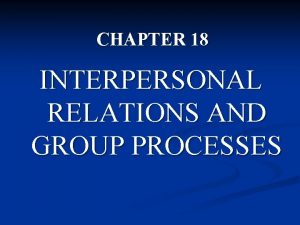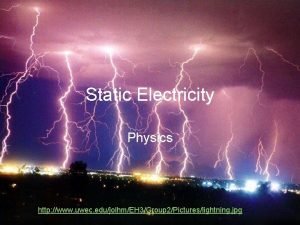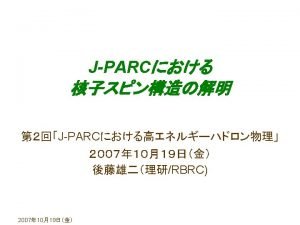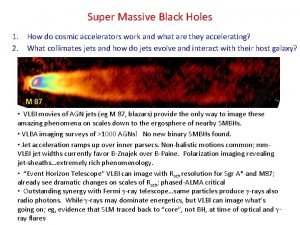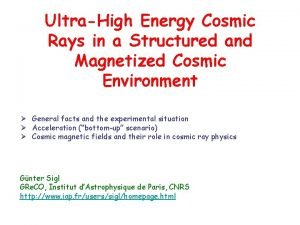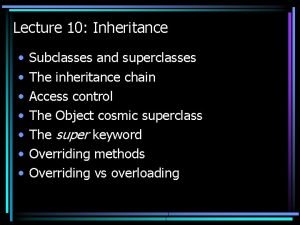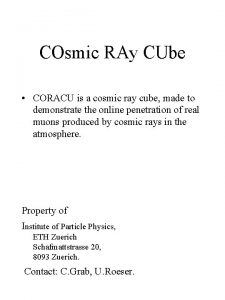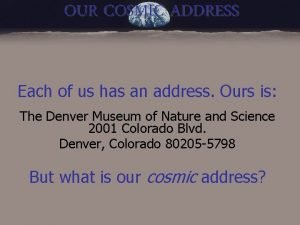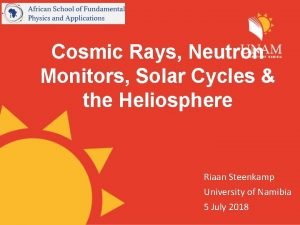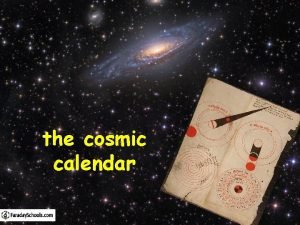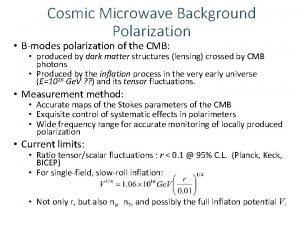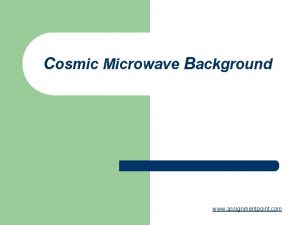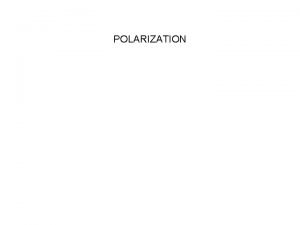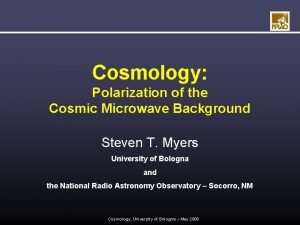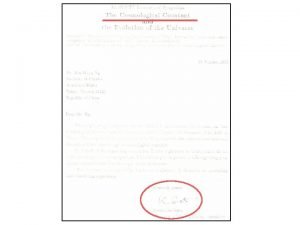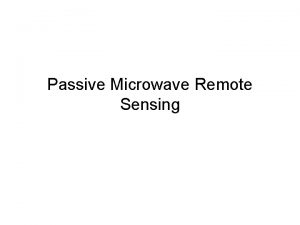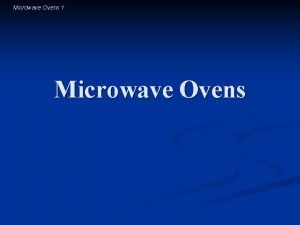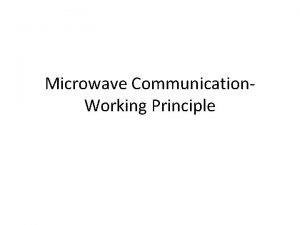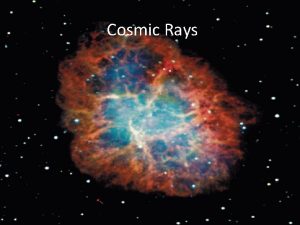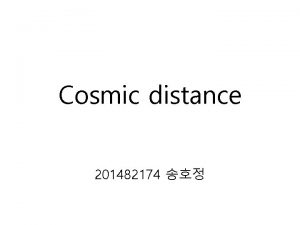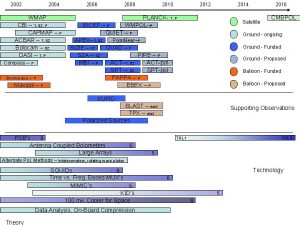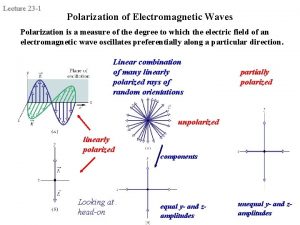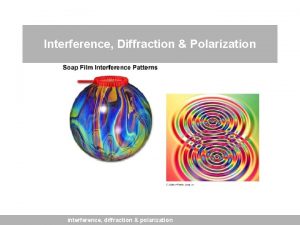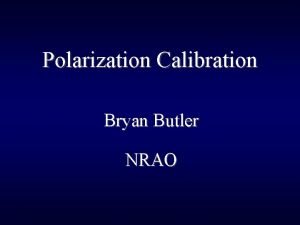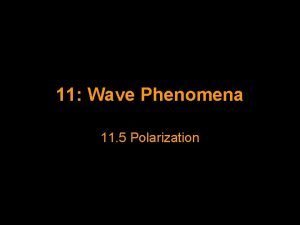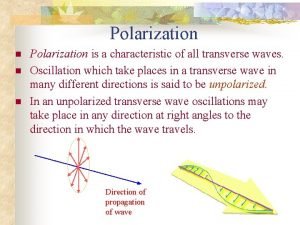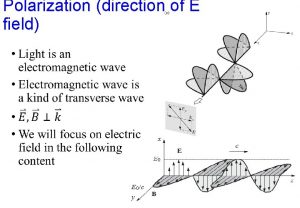CAPMAP Measuring the Polarization of the Cosmic Microwave




















































- Slides: 52

CAPMAP Measuring the Polarization of the Cosmic Microwave Background Dorothea Samtleben, Center for Cosmological Physics, University of Chicago

Center for Cosmological Physics (Cf. CP) Ø National Science Frontier Center Ø Founded at the University of Chicago in August 2001 for initially 5 years Ø Creation of an interdisciplinary environment Ø 14 faculty, 10 center fellows, graduate students, associated postdocs. . .

Research Focus Four major research components: Ø Theory Ø Structures in the Universe Ø Cosmic Radiation Backgrounds Ø High Energy Particles from Space

Activities of the Center Ø Various formal and informal seminars Ø Workshops (Auger-workshop, COSMO-02) Ø Visitors Ø Dedicated outreach and education efforts Ø Opportunities for sabbaticals for High Energy Physicists

Talk Outline Ø Motivation What do we want to learn from our experiment? Ø Experimental approach Which strategy to choose? Ø Experimental design What does our experiment look like?

How can we improve our understanding of nature? Ø Set up an experiment to study a well defined configuration e. g. High Energy Physics Ø Study the outcome of an experiment which nature has set up e. g. Astrophysics

Setup of nature‘s ‘experiment‘

How can we find out what happened in the early universe? Ø We do have witnesses! Ø We will learn about the conditions in the infant universe by a thorough questioning of the witnesses Ø We can compare our theories with the information they provide and improve our understanding of the evolution of the universe

The witnesses: Photons of the Microwave Background Radiation -100 K +100 K The sky observed at 90 GHz (COBE DMR) Cosmic

What happened 300, 000 years after the Big Bang? Ø The plasma of photons, protons and electrons became cold enough so that electrons and protons formed first atoms Ø The universe became transparent Ø These photons give us a direct snapshot of the infant universe Ø Still around today but cooled down (shifted to microwaves) due to the expansion of the universe

Expectations from inflationary models for CMB observations Ø Blackbody spectrum Ø Homogeneous, isotropic Ø On large scales scale-invariant temperature fluctuations (regions were not yet causally connected) Ø On small scales temperature fluctuations from ‘accoustic oscillations‘ (radiation pressure vs gravitational attraction) Ø Polarization anisotropies, correlated with temperature anisotropies

Characteristics of the CMB Ø Frequency Spectrum Ø Temperature Anisotropy Ø Polarization Frequency spectrum of the CMB (Compilation by Richard Mc. Cray)

Temperature Anisotropy of the CMB Dipole due to peculiar velocity of solar system Emission from the galactic plane Remaining CMB anisotropy COBE results

DASI: First Detection of CMB Polarization (September 2002) 200 K 100 0 -100 - 200 K 5 K Map is 5 degrees square

Spherical Harmonics Ylm Description of CMB by using spherical harmonics Ylm(q, j) Pictures by Clem Pryke

Description of Anisotropies Ø Statistical properties of CMB can be observed and compared with theory Ø Usually representation by power spectrum Cl (variance at the multipole l) Ø Angular scale: q ~ 180°/l

Temperature Power Spectra Compilation by Wayne Hu Compilation by Max Tegmark

Dependence on cosmological parameters Change in baryon density Change in curvature Animations by Max Tegmark

Why is the CMB polarized? Thomson scattering Polarized radiation scattered in this plane Radiation primarily scattered along this axis Charge moves along this axis Radiation incident along this axis Charge moves in two directions Unpolarized radiation incident along this axis Pictures by Matthew Hedman

Quadrupole pattern in the radiation will create polarization Quadrupole moment in motion of charge Radiation scattered along this axis has a polarized component

A view on the dynamic universe Ø Quadrupole moments from Temperature anisotropies will be washed out Ø Dynamics in the early universe determine the polarization spectrum

Different Polarization patterns E-Mode (scalar, even parity) Density fluctuations Gravity waves B-Mode (vector or tensor, odd parity) E-modes E- and B-modes, Amplitude determined by scale of inflation

Why did the CMB polarization escape detection for so long? Tiny fluctuations (1 part in 1 million) on small angular scale Challenge for the experiments: Ø Highly sensitive detectors Ø Excellent control of systematics (atmospheric, instrumental) Ø Excellent angular resolution

Comparison of Power Spectra

How to catch and query the witnesses? Ø Based at ground , balloon, space? Ø Which frequency to observe? Ø Which techniques to use (HEMT, Bolometers)? Ø What is an optimal scanning strategy?

Atmospheric Transmission Height in the atmosphere at which radiation is attenuated by a factor 1/2

Are there false witnesses? Ø Dust Ø Gravitational Lensing Ø Synchrotron Ø S-Z from Clusters Ø Point Sources Ø ? ? ? Compilation by Matthew Hedman

Based on compilation by Peter Timbie Overview of Polarization Experiments Experiment Location Technique South Pole Atacama (Chile) Socorro (New Mexico) Australia Mauna Loa (Hawaii) ISS, full sky L 2, full sky Antarctic LDB Wisconsin New Jersey 11‘, 8‘, 6‘, 5‘ 10‘ 0. 7 ° 10‘ 2‘ 6‘ L 2, full sky Antarctic LDB US Balloon South Pole (? ) South Pole Ovro Atacama (Chile) Bolometer 20‘ 3‘ 6‘‘ 2‘ 2‘ 7° 13‘ 33, 23, 10 30‘, 12‘ 7° 7° 30‘, 15‘ 7‘, 3‘ Correlation Polarimeterr B 2 K+X MAXIPOL BICEP POLARBEAR POLATRON QUEST 30(13) 8. 4 8. 7(5) 90(19) 22, 32, 60, 90 22, 30, 40(2), 60(2), 90(4) 30(4), 44(6), 70(12), 100(34) 32, 90 30 30 40, 90 40(4), 90(10) 100(4), 143(12), 217(12), 353(6), 545(8), 857(6) 150(4), 240(4) 340(4) 150(12) 420(4) 150(96) 150(~3000) 90 100, 150(~30) Beamsize Interferometer DASI CBI VLA ATCA AMIBA SPORT MAP PLANCK-LFI BAR-SPORT POLAR COMPASS PIQUE CAPMAP PLANCK-HFI Freq in GHz (#chan)

CAPMAP Princeton D. Barkats, P. Farese, J. Mc. Mahon, S. T. Staggs + undergraduates Chicago C. Bischoff, M. Hedman, D. Samtleben, K. Vanderlind, B. Winstein + undergraduates Miami J. Gundersen, E. Stefaniescu JPL T. Gaier

CAPMAP Princeton Chicago Miami JPL

Experimental setup Ø Telescope at Crawford Hill (New Jersey), 7 m dish, off-axis, Cassegrain, 0. 05 FWHM beam Ø Correlation receiver Ø W-Band (84 -100 GHz) and Q-Band (36 -45 GHz) Ø This winter 4 horns, final design 14 horns Ø Scanning on a small cap (1 degree diameter) around NCP

Correlation Polarimeter Eb Ey Ea -18 Ø Signal size ~10 W Amplification crucial Ex Ø Not affected by drift of relative gains but sensitive to relative phase shifts 2 Gy Gx Phase Switch 2 Ø Output from multiplier ~ Ex, Ey eliminated by use of phase switch: signal in one line multiplied by square wave, after multiplication demodulated Ex = Ea - Eb Ey = Ea + Eb Multiplier 2 a 2 b Gx Gy (E - E )

Sensitivity of experiments Tsys Dn Tint DG/G S System temperature Bandwidth Integration time Relative gain drift of amplifier ~ 1/f : Sensitivity : : Large bandwidth and low system temperature desirable Expected CAPMAP sensitivity:

Elimination of drifts by ‘chopping‘ Taking the difference of two measurements at different spots on the sky (same azimuthal position) gets ríd off drifts PIQUE data

Experimental setup Horn Radiometer RF IF IF box 7 m Telescope Data Acquisition

Horn 15 cm Model of the horn Predicted and measured Beam Pattern

Schematics of CAPMAP radiometer 84 -100 GHz Ø Two different temperature stages: 20 K and room temperature Ø In RF part rectangular waveguides, in IF part coaxial cables 2 -18 GHz 82 GHz

Setup at Chicago

3 inch (7. 6 cm)

IF section

Phase matching In-phase response ~A cos j Out of phase response (90 degree switch) ~A sin j




Data Acquisition Ø PCI card, 32 channels Ø 24 bit resolution Ø Sampling rate ~100 k. Hz, demodulation in software Ø Data rate ~250 Hz Ø 7 GByte/day (final design 24 GByte/day)

Work at the telescope. . .

PIQUE setup at the telescope

First Data – Total Power Channels Moon Peak: 200 K Jupiter Peak: 1 K

First Data – Polarization Channels Moon Peak: 1 K Tau A (Crab Nebula) Peak: 25 m. K

Analysis Measure temperature/polarization in a region of the sky and compare with expectation (likelihood analysis): d : Data vector C = CN + CT CN : Noise covariance CT : Theory covariance l-coverage determined by beam size

Expected Sensitivity CAPMAP expectation DASI result

Summary and Outlook Ø CMB is the oldest light in the universe Ø Provides direct view of the infant universe Ø Measurement of CMB Polarization is a big experimental challenge, anisotropies of the order of 1 part in 1 million Ø CAPMAP uses a 7 m telescope in New Jersey to observe the polarization at 90 and 40 GHz Ø Installation of 4 out of 14 horns underway Ø First data taking winter 2002/2003 Exciting time in cosmology, share it with us at the Cf. CP!
 Cosmic microwave background discovery
Cosmic microwave background discovery Discovered cosmic microwave background
Discovered cosmic microwave background Jones vector elliptical polarization
Jones vector elliptical polarization Activation polarization
Activation polarization Altruisml
Altruisml Ferroelectric
Ferroelectric Concentration polarisation
Concentration polarisation Ap psychology unit 14
Ap psychology unit 14 Polarization of light
Polarization of light Jones matrix polarization
Jones matrix polarization Hagen poiseuille equation
Hagen poiseuille equation Social trap example
Social trap example Linear polarization
Linear polarization Jones vector elliptical polarization
Jones vector elliptical polarization Polarization in electrochemistry
Polarization in electrochemistry Group polarization example
Group polarization example Motorized polarization controller
Motorized polarization controller Polarization index table
Polarization index table Deindividuation psychology definition
Deindividuation psychology definition Polarization in physics
Polarization in physics Group polarization example
Group polarization example Photon polarization
Photon polarization Groups tend to loaf less when
Groups tend to loaf less when Plane wave
Plane wave Light polarization equation
Light polarization equation Social loaf
Social loaf Depolarization vs polarization
Depolarization vs polarization Xavier fernando
Xavier fernando Diffraction and polarization
Diffraction and polarization Situational attribution
Situational attribution Polarization in chemistry
Polarization in chemistry Door in the face phenomenon
Door in the face phenomenon Groupthink vs. group polarization
Groupthink vs. group polarization Group polarization definition psychology
Group polarization definition psychology Electric field equation
Electric field equation Groupthink vs. group polarization
Groupthink vs. group polarization Polarization ellipse equation
Polarization ellipse equation Photon polarization
Photon polarization Groupthink vs group polarization
Groupthink vs group polarization Charge polarization
Charge polarization Depolarization vs polarization
Depolarization vs polarization Cosmic super accelerators
Cosmic super accelerators Cosmic rays
Cosmic rays Cosmic superclass in java
Cosmic superclass in java Cosmic rays
Cosmic rays Cosmic link östergötland
Cosmic link östergötland Structural irony example
Structural irony example Questial
Questial What is the third line of our cosmic address
What is the third line of our cosmic address Brunswick zone cosmic bowling hours
Brunswick zone cosmic bowling hours Cosmic background radiation
Cosmic background radiation Cosmic rays
Cosmic rays Calendar quiz questions
Calendar quiz questions
